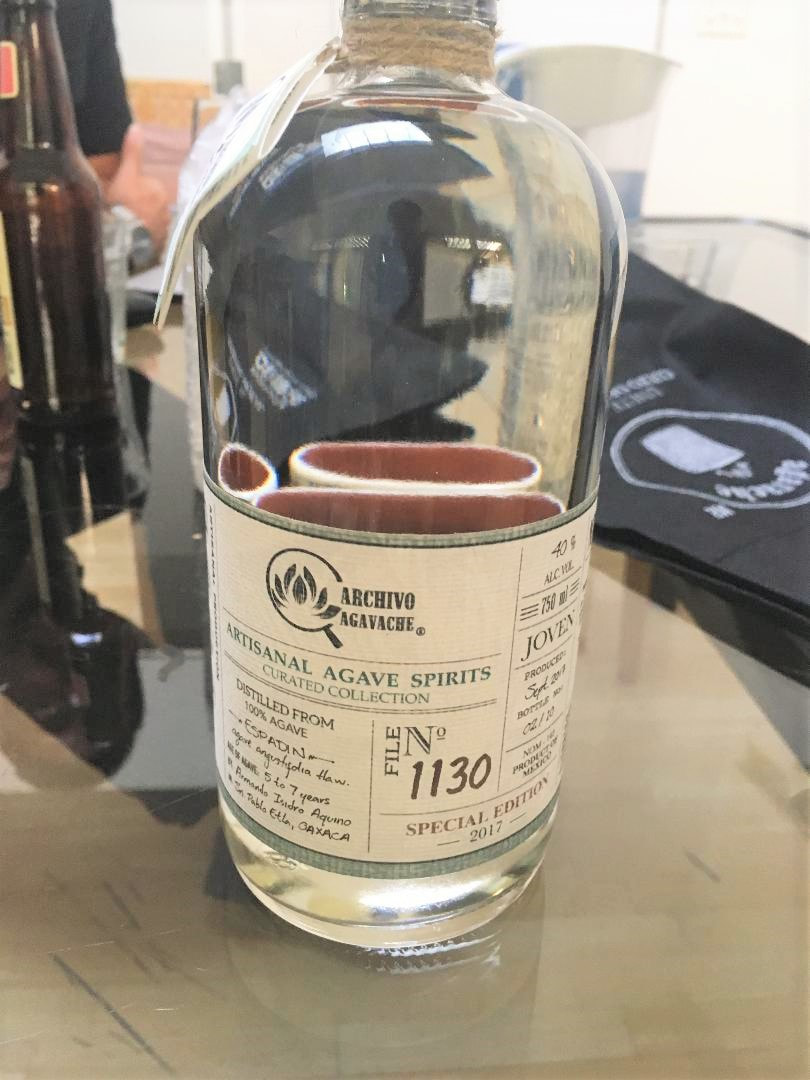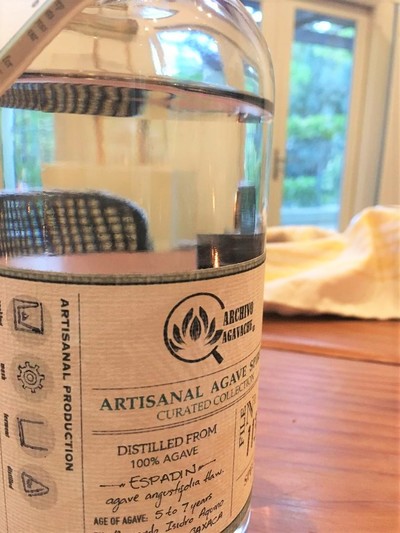By Andrea Blum ( @myamericanpantry ), Montalvo Culinary Artist
I didn’t know I would be pairing fava beans with distilled mezcal last week, but I did. And it was under the auspices of the SETI Institute, the scientific organization dedicated to exploring and understanding the origin and nature of life in the universe. How wonderful that one can combine food, drink, and our relationship to the universe–all in one meal!
Alejandro AisMar, founder of Agavache and the collaborator of composer and SETI Artist in Residence Felipe Pérez Santiago (who is being hosted by the LAP through a partnership between the LAP and SETI) brought artisanal mezcal for the table along with a crash course on the cultivation and preparation of this unique and flavorful drink. The fava beans were supplied by a local farmer. Both mezcal and fava beans are very labor intensive. The long process of shelling fava beans begs for collaborators. The agave plant, out of which mezcal is made, can take four days to mash by hand with a mace (it’s mashed in a hollowed-out tree that looks like a canoe). Never mind the smoking, cooking and aging process. Making things from scratch takes time.
Alejandro AisMar, founder of Agavache and the collaborator of composer and SETI Artist in Residence Felipe Pérez Santiago (who is being hosted by the LAP through a partnership between the LAP and SETI) brought artisanal mezcal for the table along with a crash course on the cultivation and preparation of this unique and flavorful drink. The fava beans were supplied by a local farmer. Both mezcal and fava beans are very labor intensive. The long process of shelling fava beans begs for collaborators. The agave plant, out of which mezcal is made, can take four days to mash by hand with a mace (it’s mashed in a hollowed-out tree that looks like a canoe). Never mind the smoking, cooking and aging process. Making things from scratch takes time.



In serving mezcal, you pour the first little bit into the ground as an offering to the earth–the first pour contains more alcohol and is more potent. Then you serve it in a whiskey glass or an espresso-like ceramic cup–it’s not like wine, but you can roll it around in the glass a bit. Smell it. Sip it. It’s clean. Chew on it before you swallow. You get a whole range of flavors. Since the agave’s roots do not grow deep, Alejandro said the plant takes on the flavors of neighboring plants and soil, a cherry tree for example. The agave takes about five to seven years to grow, and then it’s trimmed like a pineapple and cooked underground. It’s a process. The results are amazing, yielding a flavor I find difficult to pinpoint.
Complex. Smoky. Earthy. Smooth. Warm.
The first night we drank mezcal, I served a halibut roasted in the wood oven (smoky), wrapped in fig leaves (fruity) and served it with fresh shucked favas (earthy). Luckily, earlier in the day, artist Leah Rosenberg surprised me in the kitchen and helped me shuck the beans after I blanched them in boiling salted water. All those tiny beans take time, and it’s always nice to do it with a fellow culinary artist, catching up and chatting while we work. I only wish the mezcal had showed up earlier, for Leah’s sake.
Alejandro was drawn to artisan drink as I am to artisan foods. “Distilled spirits are a reflection of the culture that creates them,” he said. “We need to understand them and what they are made of, so we can respect the culture and nature itself.”
Complex. Smoky. Earthy. Smooth. Warm.
The first night we drank mezcal, I served a halibut roasted in the wood oven (smoky), wrapped in fig leaves (fruity) and served it with fresh shucked favas (earthy). Luckily, earlier in the day, artist Leah Rosenberg surprised me in the kitchen and helped me shuck the beans after I blanched them in boiling salted water. All those tiny beans take time, and it’s always nice to do it with a fellow culinary artist, catching up and chatting while we work. I only wish the mezcal had showed up earlier, for Leah’s sake.
Alejandro was drawn to artisan drink as I am to artisan foods. “Distilled spirits are a reflection of the culture that creates them,” he said. “We need to understand them and what they are made of, so we can respect the culture and nature itself.”
Click on the images below to see enlarged versions.






